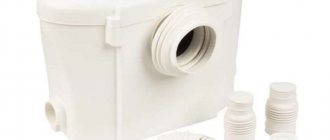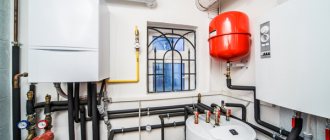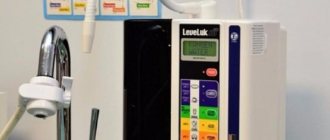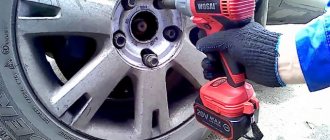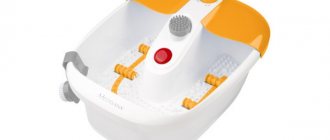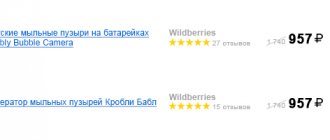Created: 12/23/2018
Updated: 02/19/2021 18:42:55Share:
Author of the article: Andrey Nikolaevich Kuznetsov
*Review of the best according to the editors of expertology.ru. About the selection criteria. This material is subjective in nature, does not constitute advertising and does not serve as a purchase guide. Before purchasing, consultation with a specialist is required.
Modern heating systems of private houses are equipped with circulation pumps. Thanks to this inexpensive device, it is possible to quickly and evenly heat the coolant in different parts of the house, saving heat energy. The main task of the device is to move liquid in a closed loop. The device operates from an electrical network, so the pump will only be useful if there is a current of 220 V. When choosing a circulation pump, you need to know several important points.
How to choose a circulation pump
- Varieties
. There are two modifications on sale that differ in design. Models with a dry rotor are distinguished by their high efficiency (up to 80%), but they require regular maintenance, their service life is short (3-5 years), and they produce a lot of noise during operation. Pumps with a wet rotor have an efficiency of 50%, but they do not require maintenance, their service life reaches 10 years, and the equipment is practically inaudible during operation. For those who are sensitive to noise, it is better to give preference to models with a wet rotor. - Productivity
. Different heating systems require a pump with optimal performance. The homeowner needs to know the power of the boiler installed in the system. If a 40 kW heating device is operating in the circuit, then the pump must provide a throughput capacity of 40 l/min (2.4 cubic m/h). - Lifting height.
The next important characteristic of the circulation pump is the pressure (lift height). Experts recommend sticking to a simple formula. For 10 m of pipeline, a pressure of 0.6 m is required. It is easy to calculate that for a heating main 100 m long, a circulation pump with a lift height of 6 m is suitable. - Adjusting the flow rate
. A very useful option in the pump is the ability to change the speed of water movement. Some models are equipped with a mechanical switch for 2-3 positions. The user selects the optimal mode based on the room temperature. More modern devices are equipped with electronic regulators that change the speed automatically. The maximum rate should not exceed 1.6 meters per second. - Power
. Each circulation pump has an electric motor with a certain power. The thinner the pipes in the heating system, the greater the motor power should be. Otherwise, the pump will not be able to overcome the hydraulic resistance in the line. For small circuits, power up to 100 W will be sufficient, and complex systems are equipped with models with motors of more than 150 W. - Coolant temperature
. Each heating system has its own temperature regimes. If when using a gas boiler the water is heated to +80°C, then in systems with a solid fuel boiler the coolant reaches a temperature of +110°C. It is important to pay attention to the lower temperature limit in case of irregular heating of the house in winter. Homeowners fill the system with antifreeze, which does not freeze in cold weather. In this case, the pump must remain operational at -10°C. - Materials
. In order for the pump to work for a long time to the owner’s delight, you should find out what materials the critical components and parts are made of. The body should ideally be cast iron, and the impeller and impeller should be made of high-quality plastic. - Connection size
. When inserting a circulation pump into the main line, it is important to consider the diameter of the pipes. Straight pipe threads are designated in inches, for example G1, G2 or G3/4. The connecting size is also indicated in the pump characteristics.
We have selected 11 of the best circulation pumps for our review. All of them have received approval from the expert community and have earned high marks from consumers.
DIY circulation pump installation
Installing the pump is considered a simple matter. You must act in accordance with the instructions. It describes in detail the installation process and its features.
You should begin work by preparing materials:
- circulation pump;
- check valve/bypass valve;
- connecting fittings;
- shut-off valves (2 pcs.), mounted on both sides of the unit;
- coupling with lock nut;
- coarse filter;
- plumbing paste/tow.
If the pump does not include a cable and plug, you will need to purchase them separately.
To perform installation work, the following labor tools are required:
- a set of plumbing wrenches (spanners and adjustable);
- welding machine with electrodes (if you plan to connect elements by welding).
Choosing a location for the pump
Modern models of units with a wet rotor are mounted in the direct or return branch of the circuit. The classic version involves installation in the return line directly in front of the boiler. This solution reduces rotor wear, prevents boiler boiling and pump damage.
Installation
Before installation, it is recommended to drain the coolant from the system. If, when draining, the liquid is heavily contaminated with metal particles and scale, you need to clean the pipes.
Next, you need to decide on the type of installation. The pump is installed in two ways:
- with shut-off valve;
- with a ball valve located on the main tapping line.
A bypass is first installed in the pump installation area. Its diameter should be less than the parameters of the main contour. The next step is to install a coarse filter. It has an arrow indicating the direction of fluid movement. It should coincide with the coolant movement arrow on the pump.
The pump housing is mounted in a vertical or horizontal position (recommendations of the instructions and technical specifications are taken into account). Shut-off valves (or ball valves) are connected before and after the unit. In case of repair or maintenance of the unit, it is enough to shut off the valves without draining the water from the entire system.
The shut-off valves are mounted on the main pipe through which the coolant moves.
All connections must be sealed with a special paste or tow. Upon completion of the plumbing work, the system is filled with water, after which the tightness of the installation joints is checked. The unit screw should be opened to expel air pockets.
Electrical connection
The unit allows water to pass through, so the electrical circuit must be protected by an RCD. The cutoff current is 30 mA. The pump can be powered through a socket equipped with grounding (protection level must correspond to IP44). An alternative connection option involves connecting the circulation device directly without a socket using a 3x1.5 mm PVA cable or the one included in the kit.
Rating of the best circulation pumps
| Nomination | place | Name of product | price |
| The best inexpensive pumps for the heating system | 1 | VORTEX TsN-32-6 | 2 070 ₽ |
| 2 | Leberg GRS 25/4 (180 mm) | 2 350 ₽ | |
| 3 | Grundfos UPS 25-40 180 | 4 800 ₽ | |
| 4 | VORTEX CN-25-6 | 2 020 ₽ | |
| The best circulation pumps for heating in terms of price-quality ratio | 1 | GILEKS Compasses 32-80 | 5 852 ₽ |
| 2 | WCP 25-80G (180 mm) | 4 590 ₽ | |
| 3 | Wilo Star-RS 25/4-180 | 4 800 ₽ | |
| 4 | DAB EVOTRON 40/180 | 10 108 ₽ | |
| The best circulation pumps for high-performance heating | 1 | DAB A 110/180XT | 20 600 ₽ |
| 2 | Grundfos UPS 32-80 180 | 12 250 ₽ | |
| 3 | Wilo Star-Z 20/7 CircoStar | 12 876 ₽ |
The best inexpensive pumps for the heating system
Low-cost circulation pumps can handle small heating systems or water supply lines. Among the inexpensive models there are many worthy examples. Here are the best ones.
VORTEX TsN-32-6
Rating: 4.8
A very tempting purchase for heating systems in a private home is the VORTEX TsN-32-6 pump. It perfectly combines affordability and excellent technical characteristics. Thanks to the high power of the electric motor (90 W), the pump creates a lifting height of 7.5 m, and the productivity reaches 9 cubic meters. m/h. The device can operate in a wide temperature range (-10...+110°C), it is durable and reliable. The cast iron pump housing is also reflected in the weight of the equipment (3.8 kg).
You can rarely find negative reviews on thematic forums; most often these are isolated cases of marriage. In general, domestic consumers are satisfied with the technical characteristics and low cost of the pump. The model becomes the winner of our rating.
Advantages
- affordable price;
- good pressure;
- high performance;
- reliable design.
Flaws
- Pump breakdowns are noted during the warranty period.
Leberg GRS 25/4 (180 mm)
Rating: 4.7
The Norwegian circulation pump Leberg GRS 25/4 (180 mm) is distinguished by its silent operation. Although it was assembled in China, neither experts nor consumers have any complaints about the quality. The device consumes electricity quite economically (88 W), it is made reliably, as evidenced by the cast iron body and graphite bearing. Moreover, the weight of the unit is only 2.5 kg. The pump is inferior to the rating leader in such components as maximum pressure (4 m) and throughput (3 cubic m/h). Coolant with a temperature from -10 to +110°C can circulate through the pump.
Homeowners liked the affordable price of the Norwegian-Chinese product, its trouble-free operation, and the absence of noise. There is no vibration or rattling when pumping water.
Advantages
- acceptable price;
- silent operation;
- efficiency;
- reliability and durability.
Flaws
- modest performance.
Grundfos UPS 25-40 180
Rating: 4.6
The Danish brand Grundfos is a recognized leader in the production of plumbing equipment. The compact and lightweight UPS 25-40 180 pump consumes only 45 W, while delivering a maximum head of 4 m and a flow capacity of 2.93 cubic meters. m/h. The model is equipped with an asynchronous electric motor and switch. The installation can operate in both horizontal and vertical positions. The device can be installed in both closed and open heating systems.
In reviews, users praise the pump for its reliability, durability, quiet operation and efficiency. Some homeowners have had their circulation pump running for over 10 years. Since the model is somewhat outdated (and its price is the highest), experts gave it third place in the ranking.
Advantages
- quiet operation;
- economical energy consumption;
- versatility;
- asynchronous electric motor.
Flaws
- outdated model;
- high price.
VORTEX CN-25-6
Rating: 4.5
Another model from the Vikhr brand made it into our rating. The TsN-25-6 pump stopped one step from the pedestal, despite the best price. The device consumes quite a lot of electricity (90 W), creating a lifting height of 6 m and a capacity of 3 cubic meters. m/h. But experts consider the main problem of this product to be the high noise level. The circulation pump can only be installed vertically in the heating system. The advantages of the device include a reliable cast-iron body and the presence of connecting nuts in the kit.
According to Russian consumers, VORTEX TsN-25-6 deserves praise for its low price, reliability, speed controller, and performance. Some homeowners express dissatisfaction with only vertical installation and decent noise during operation.
Advantages
- low price;
- reliability and durability;
- cast iron body;
- performance.
Flaws
- heavy weight (3.5 kg);
- high energy consumption;
- noisiness.
Which company to choose
For a quality purchase, you can consider many models that have certain differences in the degree of reliability and service life. These pumping devices can be classified as the quietest mechanisms.
List of manufacturers whose products you should pay attention to:
- Grundfos;
- Wester;
- Wito;
- DAB;
They are constantly trying to replace the products of these manufacturers with Chinese-made products, so you need to be extremely careful when choosing. Over time, poorly made pumps perform worse or simply fail.
Caliber NTs-15/6 is a budget option and is highly reliable. It can operate in three speed modes, its body is made of high-strength cast iron. Such a device functions well even at high coolant temperatures of up to 60 degrees, which cannot be said about functionally similar devices.
Installation of such a device can be done in any convenient position. The mass of such a pump reaches approximately 2.5 kg. It should also be noted that the device operates absolutely silently with a power rating of 90 W. It must be remembered that such pumps function normally only when clean water is passed through them. The maximum possible temperature of the working medium with which this pump can normally interact is 110 degrees.
The water pumping speed is approximately 2.5 cubic meters of water per hour. This is considered normal for a relatively small room. The pumping device begins to make noise after some time, but such problems are not of particular importance due to the affordable cost of the device.
Advantages:
- Affordable price;
- Compactness;
- Cast iron, durable, durable body;
- Work at high temperatures;
- The efficiency of the device is above average.
The disadvantages include:
- Unreliable assembly;
- Some rotor components are made of plastic.
The best circulation pumps for heating in terms of price-quality ratio
Pumps with good pressure and performance are capable of maintaining the required level of coolant circulation in a one- or two-story house. The following models have the optimal combination of affordable price and good technical parameters.
GILEKS Compasses 32-80
Rating: 4.9
The circulation pump JILEX Compass 32-80 has an excellent ratio of cost and technical characteristics. Thanks to a powerful electric motor (245 W), the pump creates a maximum pressure of up to 8 m, providing a throughput of 8 cubic meters. m/h. The model works perfectly in heating systems of private houses (up to 3 floors). The kit includes fastening nuts protected from corrosion. A three-speed switch allows you to save energy by choosing the optimal mode for your heating system. Experts gave the model first place in our rating.
Users have no particular complaints about the operation of the pump; it has the best price-quality ratio. The device operates reliably, silently and efficiently.
Advantages
- saving heat and electricity;
- high-quality assembly;
- silent operation;
- reliability.
Flaws
- not detected.
WCP 25-80G (180 mm)
Rating: 4.8
The WCP 25-80G (180 mm) pump is practically in no way inferior to the rating winner. It is suitable for installation in single-pipe or two-pipe heating systems. The model is equipped with a powerful motor (245 W), which provides performance from 0.5 to 8.5 cubic meters. m/h and pressure from 0.5 to 8.0 m. The pump is well made, the cast iron body and aluminum motor make the device durable. Thanks to the three-position control, users can choose the desired operating mode. The strengths of the pump include its compactness, which simplifies its installation.
Overall, homeowners are pleased with the pump's reliability, affordability, and durability. The product failed to surpass the leader in the rating due to loud noise at maximum speed and low-quality plastic.
Advantages
- compact dimensions;
- light weight;
- three-position regulator;
- affordable price.
Flaws
- noisy work.
Wilo Star-RS 25/4-180
Rating: 4.7
The German pump Wilo Star-RS 25/4-180 is popular among domestic homeowners. In just 2 months, 2187 people in the nuclear field were interested in this device. The model is designed for small heating systems. The device consumes only 48 W of electricity, delivering a maximum head of 4 m and a throughput of up to 3 cubic meters. m/h. The model looks reliable, the cast iron body and stainless steel shaft will ensure a long service life. The pump earned high marks from experts for its quiet operation and the presence of a speed switch.
Users praise the German device for its reliability, silent operation and low power consumption. The pump failed to rise higher in the rating due to limited performance and only horizontal installation.
Advantages
- reliability and durability;
- silent operation;
- economical energy consumption;
- affordable price.
Flaws
- modest performance.
DAB EVOTRON 40/180
Rating: 4.7
The Italian circulation pump DAB EVOTRON 40/180 is designed to work in air conditioning and heating systems. The manufacturer has used advanced electronic rotation speed control. Thanks to this, the pump's performance can change automatically, which has a positive effect on energy efficiency. Sleep mode allows you to save electricity. Experts note the presence of thermal insulation of the housing and minimal power consumption (27 W). The maximum head is 4 m, and the throughput is limited to 4 cubic meters. m/h.
Users are satisfied with the quality and reliability of the circulation pump, it is easy to use. The disadvantage of the device is the high price, due to which the model is located outside the rating pedestal.
Advantages
- quiet operation;
- automatic speed control;
- low power consumption;
- high-quality assembly.
Flaws
- high price.
GILEKS Compasses 32-80
Photo: https://beru.ru
The circulation pump JILEX Compass 32-80 has an excellent ratio of cost and technical characteristics. Thanks to a powerful electric motor (245 W), the pump creates a maximum pressure of up to 8 m, providing a throughput of 8 cubic meters. m/h. The model works perfectly in heating systems of private houses (up to 3 floors). The kit includes fastening nuts protected from corrosion. A three-speed switch allows you to save energy by choosing the optimal mode for your heating system. Experts gave the model first place in our rating.
Circulation pump GILEX Compass 32/80 (245 W)
Advantages:
- saves energy
- high-quality assembly
- silent operation
- reliability
Flaws:
- not detected
The best circulation pumps for high-performance heating
In multi-storey cottages, uniform heating of the heating system is ensured by high-performance pumps (from 6 cubic meters per hour). Experts have identified several high-quality devices.
DAB A 110/180XT
Rating: 4.9
The Italian pump DAB A 110/180 XT finds the widest scope of application. It is installed in heating and air conditioning systems, in underfloor heating circuits. The model demonstrates high productivity (12.5 cubic m/h) and the highest head (11.1 m) among its competitors. These record-breaking figures are ensured by a powerful electric motor (403 W). The minimum coolant temperature can reach -10°C. The manufacturer used cast iron to make the body, the motor is made of aluminum, and the impeller is made of technopolymer. The circulation pump can operate in three modes, which is convenient when the weather changes.
Users note the high power of the Italian device, its reliability and durability. The only downside is the heavy weight (7.3 kg).
Advantages
- high performance;
- high pressure;
- quality materials;
- three operating modes.
Flaws
- heavy weight.
Grundfos UPS 32-80 180
Rating: 4.8
The Danish pump Grundfos UPS 32-80 180 is slightly inferior in performance to the winner of the rating. It can be used in heating systems where water or glycol-containing liquids play the role of coolant. The high-performance device has good throughput (11 cubic m/h) and pressure (7.5 m). The pump can operate in three modes, and the electric motor is protected from overheating. The pump body is made of cast iron, which is protected from corrosion by a paint coating. Thanks to ceramic bearings, silent operation of the equipment is achieved.
The model takes second place only due to more modest performance indicators. As for the reliability and durability of the pump, users have no complaints.
Advantages
- simple installation;
- high throughput;
- silent operation;
- reliability and durability.
Flaws
- minimum coolant temperature (+2°C).
Wilo Star-Z 20/7 CircoStar
Rating: 4.7
German quality, combined with an affordable price and compact size, allowed the Wilo Star-Z 20/7 CircoStar pump to enter the top three in the rating. The lightweight device (2.8 kg) demonstrates a lifting height of 6 m and a capacity of up to 6 cubic meters. m/h, economically consuming electricity (146 W). The pump is capable of operating in a wide temperature range (-10...+110°C), so the product is installed in cold water supply, heating and air conditioning systems. The pump is reliable and durable, this is achieved through a bronze housing, graphite bearings and a current-resistant electric motor.
Homeowners consider the pump's strengths to be high-quality assembly, compactness and lightness. The disadvantages include a large number of fakes on the domestic market.
Advantages
- high quality;
- affordable price;
- wide scope of application;
- lightness and compactness.
Flaws
- there are a lot of fakes in Russia.
How to calculate pump parameters
Before choosing a heating pump, it is necessary to perform some calculations to help determine the performance of the unit. To do this, it is recommended to use the formula:
Q = 0.86R/TF–TR, where:
- Q – performance indicator;
- R – thermal power;
- TF – inlet liquid temperature;
- TR – outlet liquid temperature.
Thermal power is determined from the table or by referring to SNiP 2.04.07-86 standards.
According to SNiP standards, taking into account temperatures down to minus 30 degrees:
- in small houses up to 2 floors - 173-177 W/m2; – for small buildings whose number of storeys does not exceed two;
- in buildings with more than 3-4 storeys – 97-101 W/m
An alternative option for determining thermal power is to use the formula: V x T x K = kcal/h.
Explanation of values:
- V – volume of the room (to obtain data you need to multiply the width, length and height), unit of measurement – m3;
- T – temperature difference between the street air temperature and the desired indoor temperature, unit of measurement – °C;
- K – thermal dissipation coefficient (selected taking into account the thermal protection characteristics of the room).
| Coefficient | Room type |
| 0,6 – 0,9 | Excellent thermal insulation of all surfaces (ceiling, roof, walls, floor). |
| 1,0 – 1,9 | Average thermal insulation. The walls are made of double brickwork, there are a small number of windows, the roof is arranged taking into account the rules of the roofing pie. |
| 2,0 – 2,9 | The walls are made of single brick, the roof is not insulated, there are many windows. The degree of thermal insulation is below average. |
| 3,0 – 4,0 | The structure is made of wood or metal. There is no thermal insulation layer. |
As a result of calculating the thermal power using the above formula, the value in kcal/hour is obtained. In order to convert the indicator into the usual kW/hour, you should divide it by 860.
